Recombinant Human CDK5 Protein, His-tagged
| Cat.No. : | CDK5-236H |
| Product Overview : | Recombinant Human CDK5(1-292aa) fused with His tag at C-terminal was expressed in Insect cells. |
- Specification
- Gene Information
- Related Products
- Case Study
- Application
- Download
| Species : | Human |
| Source : | Insect Cells |
| Tag : | His |
| Protein Length : | 1-292aa |
| Description : | CDK5, also known as cyclin-dependent-like kinase 5 isoform 1, is a member of the cyclin dependent kinase family of serine/threonine kinases. It is present in numerous mammalian tissues including kidney, testes, and ovary. Its activity is detected almost exclusively in brain extracts. This is activated by association with a neuron-specific activator, p35 or its isoform p39. CDK5 is probably involved in the control of the cell cycle. |
| Predicted N Terminal : | Met1 |
| Form : | Liquid. In Phosphate Buffered Saline (pH 7.4) containing 10% glycerol. |
| Molecular Mass : | 34.1kDa (298aa) 28-40KDa (SDS-PAGE under reducing conditions.) |
| AA Sequence : | MQKYEKLEKI GEGTYGTVFK AKNRETHEIV ALKRVRLDDD DEGVPSSALR EICLLKELKH KNIVRLHDVL HSDKKLTLVF EFCDQDLKKY FDSCNGDLDP EIVKSFLFQL LKGLGFCHSR NVLHRDLKPQ NLLINRNGEL KLADFGLARA FGIPVRCYSA EVVTLWYRPP DVLFGAKLYS TSIDMWSAGC IFAELANAGR PLFPGNDVDD QLKRIFRLLG TPTEEQWPSM TKLPDYKPYP MYPATTSLVN VVPKLNATGR DLLQNLLKCN PVQRISAEEA LQHPYFSDFC PPHHHHHH |
| Purity : | > 90% by SDS - PAGE |
| Applications : | SDS-PAGE |
| Storage : | Can be stored at +4 centigrade short term (1-2 weeks). For long term storage, aliquot and store at -20 centigrade or -70 centigrade. Avoid repeated freezing and thawing cycles. |
| Concentration : | 0.25 mg/ml (determined by Absorbance at 280nm) |
| Publications : |
A cyclin-dependent kinase 5-derived peptide inhibits Cdk5/p25 activity and improves neurodegenerative phenotypes (2020)
A Cdk5-derived peptide inhibits Cdk5/p25 activity and improves neurodegenerative phenotypes (2023)
|
| Gene Name | CDK5 cyclin-dependent kinase 5 [ Homo sapiens ] |
| Official Symbol | CDK5 |
| Synonyms | CDK5; cyclin-dependent kinase 5; PSSALRE; TPKII catalytic subunit; protein kinase CDK5 splicing; cell division protein kinase 5; serine/threonine-protein kinase PSSALRE; tau protein kinase II catalytic subunit; |
| Gene ID | 1020 |
| mRNA Refseq | NM_001164410 |
| Protein Refseq | NP_001157882 |
| MIM | 123831 |
| UniProt ID | Q00535 |
| ◆ Recombinant Proteins | ||
| CDK5-3185HF | Recombinant Full Length Human CDK5 Protein, GST-tagged | +Inquiry |
| CDK5-564H | Recombinant Human CDK5 Protein, His (Fc)-Avi-tagged | +Inquiry |
| CDK5-611R | Recombinant Rhesus Macaque CDK5 Protein, His (Fc)-Avi-tagged | +Inquiry |
| CDK5-815H | Active Recombinant Human CDK5, GST-tagged | +Inquiry |
| CDK5-5227HF | Active Recombinant Full Length Human CDK5 Protein, GST-tagged | +Inquiry |
| ◆ Cell & Tissue Lysates | ||
| CDK5-7626HCL | Recombinant Human CDK5 293 Cell Lysate | +Inquiry |
Case 1: Pao PC, et al. Proc Natl Acad Sci U S A. 2023
Aberrant activity of cyclin-dependent kinase (Cdk5) has been implicated in various neurodegenerative diseases. This deleterious effect is mediated by pathological cleavage of the Cdk5 activator p35 into the truncated product p25, leading to prolonged Cdk5 activation and altered substrate specificity. Elevated p25 levels have been reported in humans and rodents with neurodegeneration, and the benefit of genetically blocking p25 production has been demonstrated previously in rodent and human neurodegenerative models.
Here, by testing the IP-Linked kinase assay, recombinant Cdk5/p25 complex was used. Researchers report a 12-amino-acid-long peptide fragment derived from Cdk5 (Cdk5i) that is considerably smaller than existing peptide inhibitors of Cdk5 (P5 and CIP) but shows high binding affinity toward the Cdk5/p25 complex, disrupts the interaction of Cdk5 with p25, and lowers Cdk5/p25 kinase activity. When tagged with a fluorophore (FITC) and the cell-penetrating transactivator of transcription (TAT) sequence, the Cdk5i-FT peptide exhibits cell- and brain-penetrant properties and confers protection against neurodegenerative phenotypes associated with Cdk5 hyperactivity in cell and mouse models of neurodegeneration, highlighting Cdk5i's therapeutic potential.
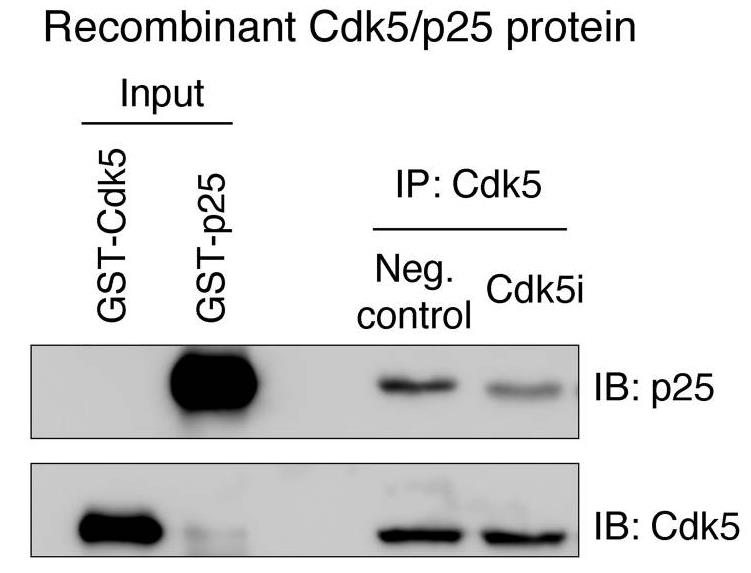
Fig1. IP-Linked kinase assay.
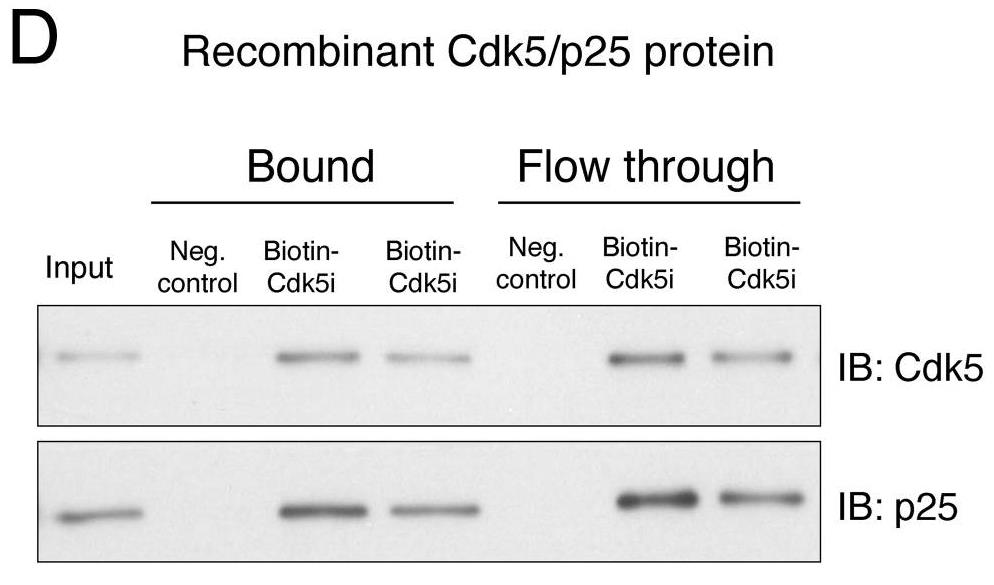
Fig2. Pull-down assay.
Case 2: Peyressatre M, et al. Biotechnol J. 2020
CDK5 plays a major role in neuronal functions, and is hyperactivated in neurodegenerative pathologies as well as in glioblastoma and neuroblastoma. Although this kinase constitutes an established biomarker and pharmacological target, there are few means of probing its activity in cell extracts or in living cells.
To this aim a fluorescent peptide reporter of CDK5 kinase activity, derived from a library of CDK5-specific substrates, is engineered and its ability to respond to recombinant CDK5/p25 is established and CDK5 activity in glioblastoma cell extracts is reported on through sensitive changes in fluorescence intensity.
A cell-penetrating variant of this biosensor which can be implemented to image CDK5 activation dynamics in space and in time is further implemented. As such it offers attractive opportunities to develop a diagnostic assay for neuronal pathologies associated with hyperactivated CDK5, as well as a companion assay to evaluate response to new therapies targeting this kinase.
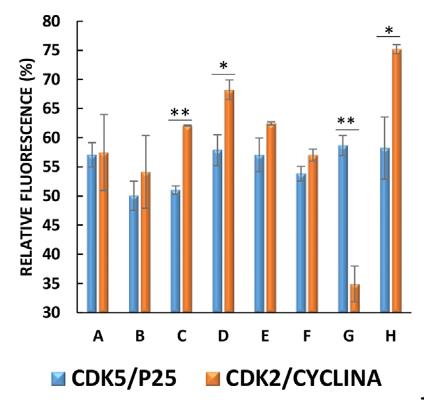
Fig1. Histogram representing the relative fluorescence enhancement of the different peptide biosensors in response to CDK5 or to CDK2 activity.
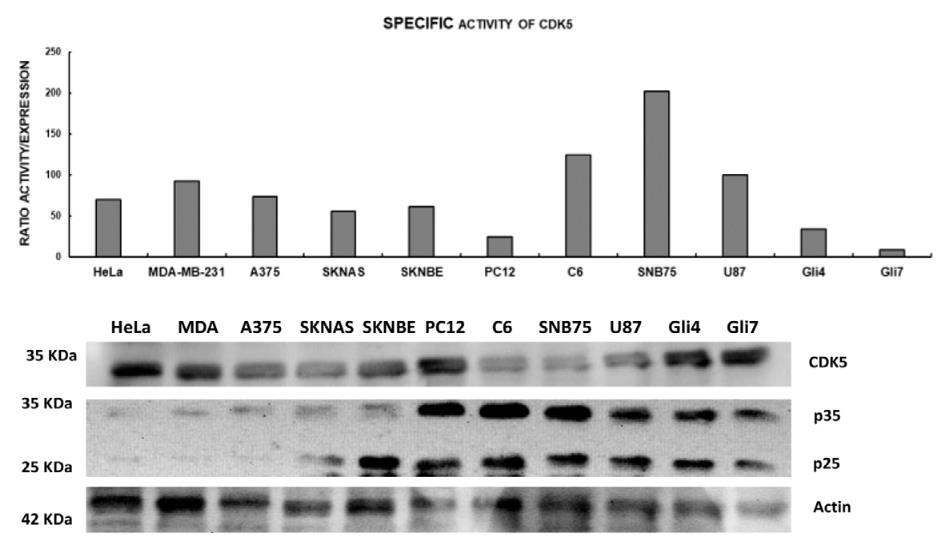
Fig2. Specific activity of CDK5 kinase in cell extracts from neuronal and non-neuronal cell lines.
Recombinant human CDK5 (rhCDK5) has various applications in the field of biological research and drug development, particularly in understanding the role of CDK5 in cellular processes and disease mechanisms. Here are some of the applications of rhCDK5:
Cancer Research: CDK5 is implicated in the regulation of cell cycle and has been linked to various types of cancer. Recombinant CDK5 can be used to study its role in tumorigenesis and to identify potential therapeutic targets.
Memory and Learning: RhCDK5 is involved in synaptic plasticity, memory formation, and learning processes in the brain. Modulating rhCDK5 activity may have potential therapeutic applications for improving memory and cognitive function in conditions such as dementia or traumatic brain injury.
Protein Interaction Studies: rhCDK5 can be used in assays to identify and characterize its interaction with other proteins, such as its activators and substrates.
Therapeutic Applications: Findings from studies using rhCDK5 may contribute to the development of therapeutics that target CDK5 for the treatment of diseases where its dysregulation is implicated.
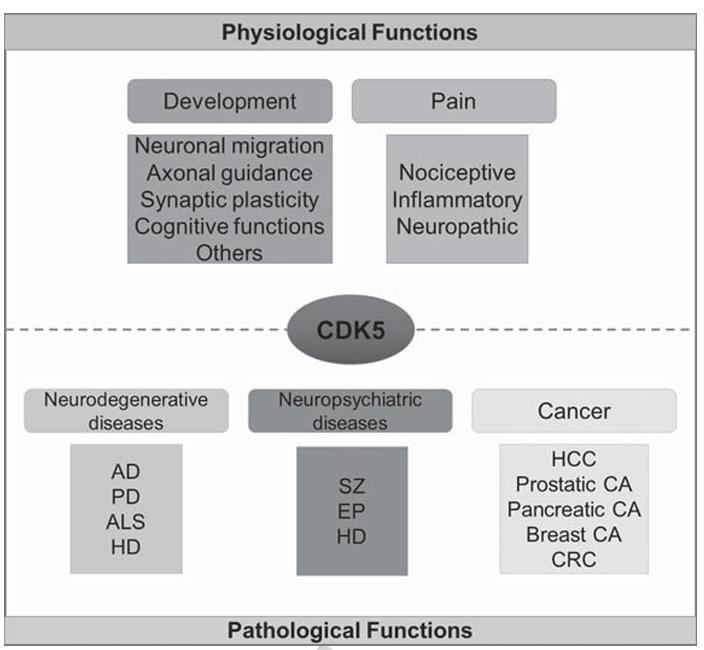
Fig1. CDK5 main physiological and pathological functions. (Nicole Cortés, 2019)
Not For Human Consumption!
Inquiry
- Reviews
- Q&As
Q&As (1)
Ask a questionThe CDK5 is expressed from HEK293 host, which is a mammalian cells system.
Ask a Question for All CDK5 Products
Required fields are marked with *
My Review for All CDK5 Products
Required fields are marked with *
Inquiry Basket

